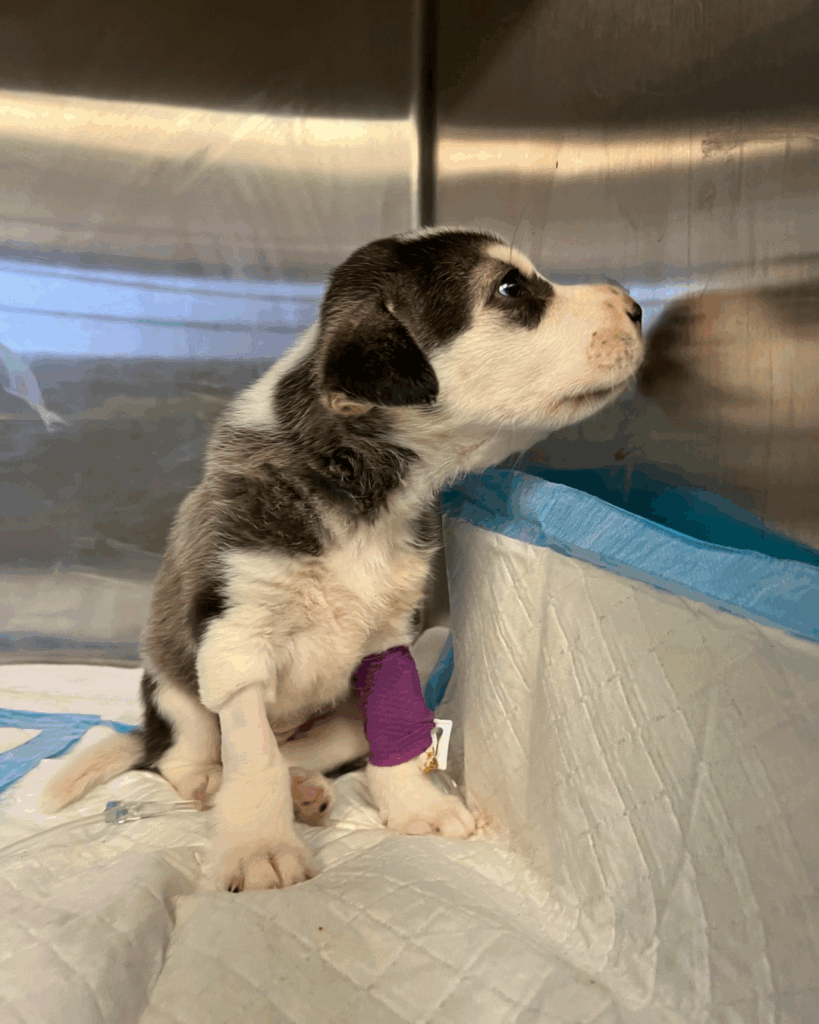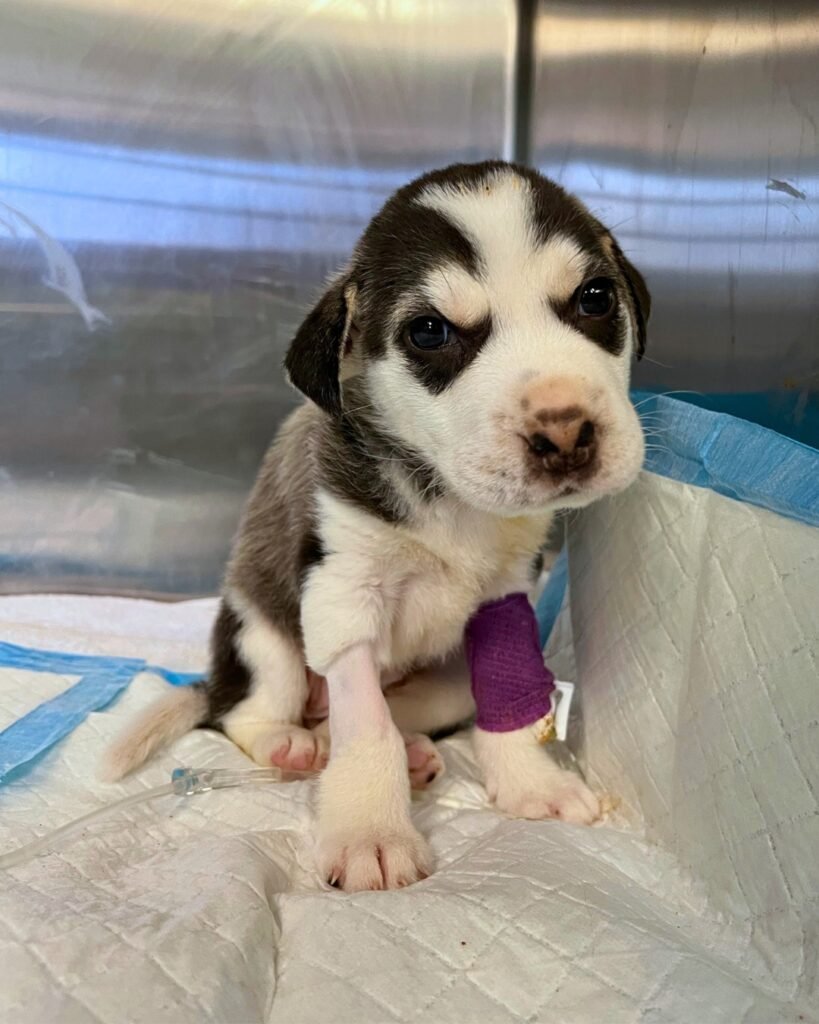It was just another day in Austin, Texas—until a passerby heard something unusual: a soft whimper coming from a trash can. Curious and concerned, they lifted the lid and were horrified by what they saw.
Inside, lying atop crumpled garbage, was a four-week-old husky puppy. He was freezing, weak, and barely breathing. His tiny frame trembled, and his eyes struggled to stay open. He had clearly been left to die.
The stranger didn’t hesitate. They scooped him up and rushed him to the nearest emergency vet, cradling the pup in their arms like fragile glass.
A Long Night at the Emergency Room

At the emergency clinic, staff jumped into action. The puppy, now named Kiss, was in critical condition. His blood sugar was so low it didn’t register on the monitor. He was too weak to nurse, let alone move, and his body temperature was dangerously low.
Veterinarians worked through the night—warming his frail body with blankets and heating pads, carefully administering fluids, and monitoring his vital signs. There was no certainty he would make it to morning.
Still, they saw something in Kiss’s eyes: a will to live. “He was so fragile,” one team member said, “but you could tell he wanted to fight.”
By dawn, Kiss was stable enough to be transferred to the Austin Animal Center. But it was clear he still needed more intensive care than the shelter could provide on its own.
A Rescue Team Steps In

That’s when Austin Pets Alive! (APA!) stepped forward.
Known for taking on some of the toughest cases, APA! quickly arranged for Kiss to be transferred into their care. Time was of the essence. The little husky’s condition remained precarious.
“Our medical team acted fast,” said a spokesperson for APA! told on Newsweek. “He needed glucose stabilization, rehydration, and antibiotics right away.”
The staff at APA! wrapped Kiss in love and medical attention. Every hour counted, and thanks to their efforts, the tide began to turn. His glucose levels began to climb. He accepted small amounts of nourishment. And, slowly, he started to respond.
Fighting for Kiss—and For Thousands Like Him
APA! shared that treatment like Kiss’s would cost over $1,000 at a private clinic. While the nonprofit works hard to reduce costs, such care is still a financial strain—especially as the number of abandoned animals continues to rise.
In 2024, U.S. shelters took in nearly 7 million animals, according to Shelter Animals Count. It marked an increase of nearly 3 percent over the previous year. Worse still, by year’s end, over 100,000 more pets had entered shelters than had found homes or been reclaimed.
“Stray intakes may have dipped slightly,” APA! noted, “but strays still made up 60 percent of all shelter entries.”
This imbalance means more animals like Kiss may face the same cruel fate—discarded, forgotten, and barely given a chance.
“That tiny baby,” one commenter wrote after hearing Kiss’s story. “Who is throwing an angel like that out like garbage?”
Kiss Deserves a Home—And So Do So Many Others

Though still small and fragile, Kiss is now out of danger. His appetite is returning, and so is his spark. But his journey isn’t over yet. He still needs a foster home—a calm and caring place where he can continue to heal, grow stronger, and learn that not all humans will throw him away.
Austin Pets Alive! is now looking for someone to give Kiss the loving environment he deserves. “This little pup would be lucky to have you—and you’d be lucky to have him,” APA! said.
Kiss’s survival is a testament to what compassion, medical care, and timely intervention can do. But he’s also a reminder of the countless animals still waiting for someone to choose them.







